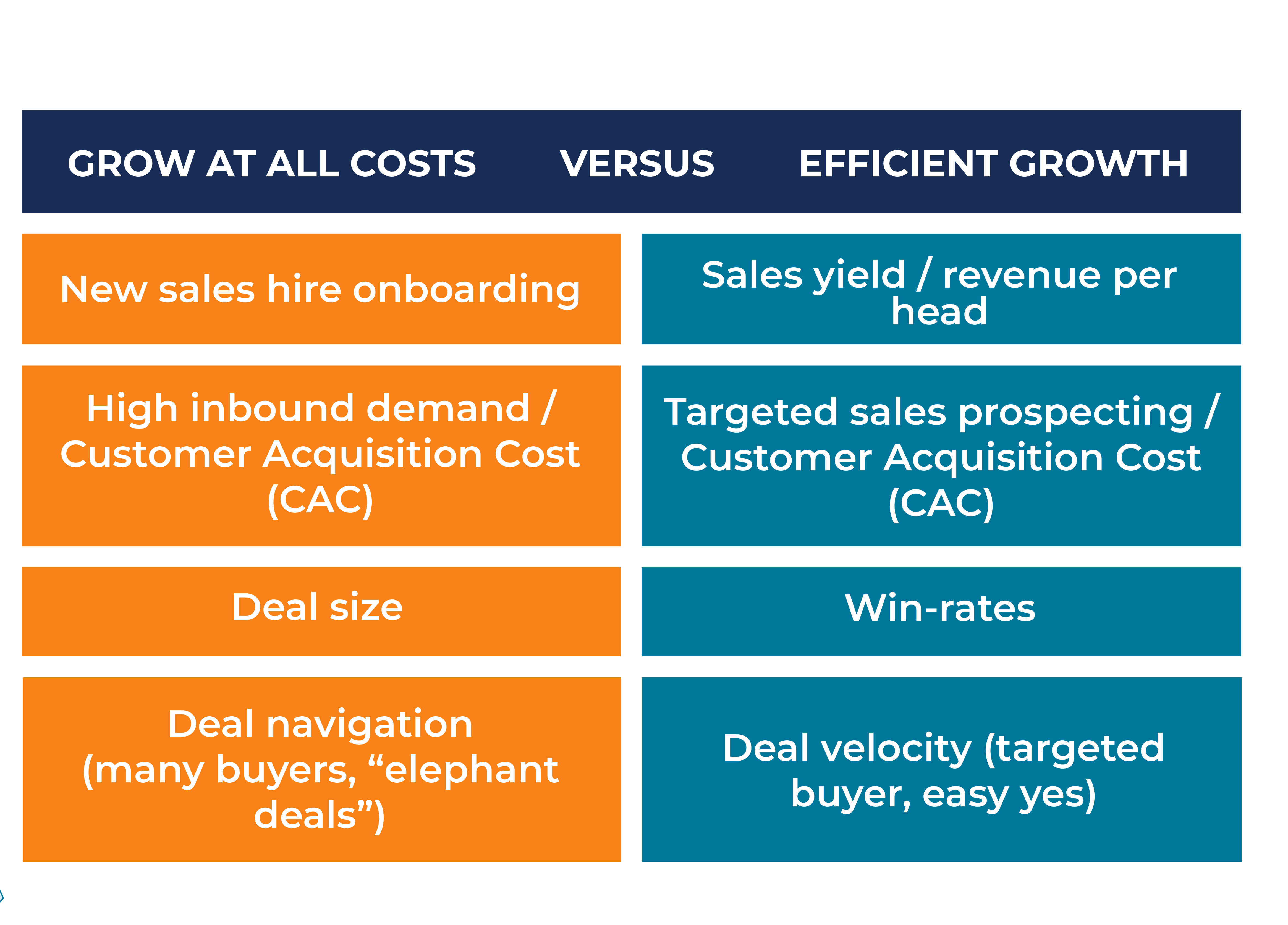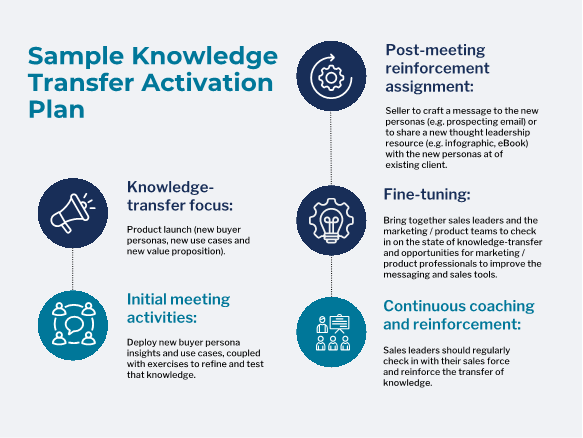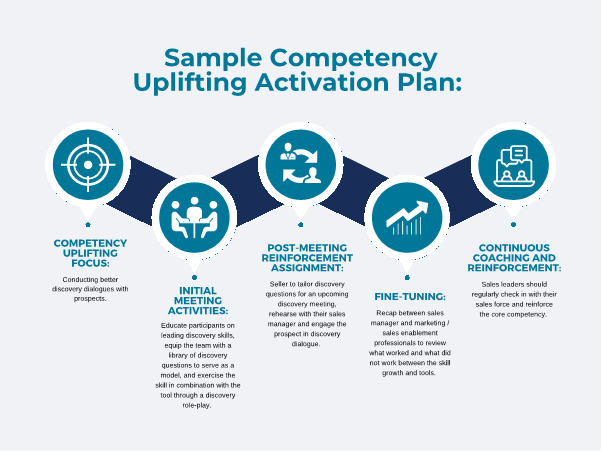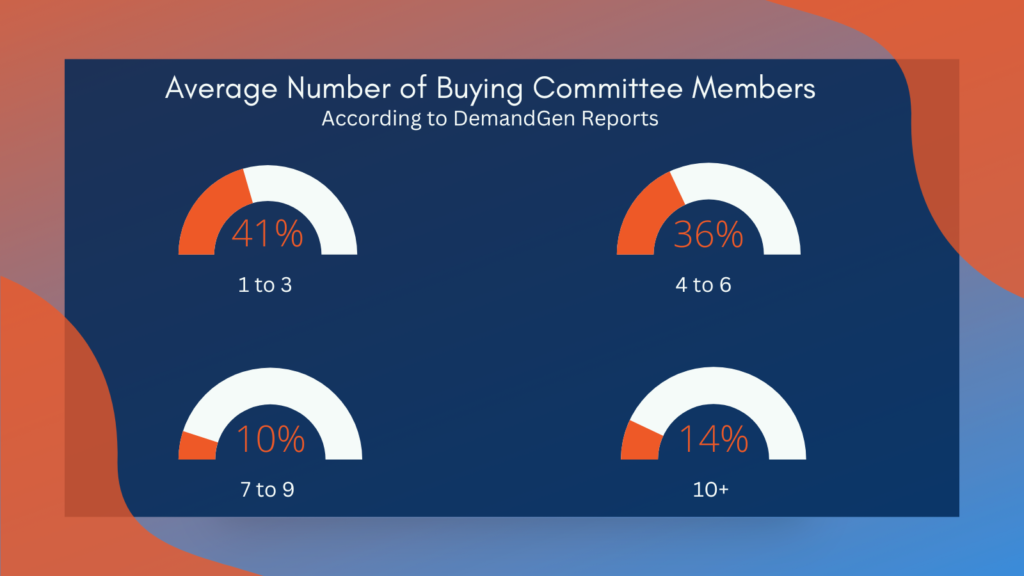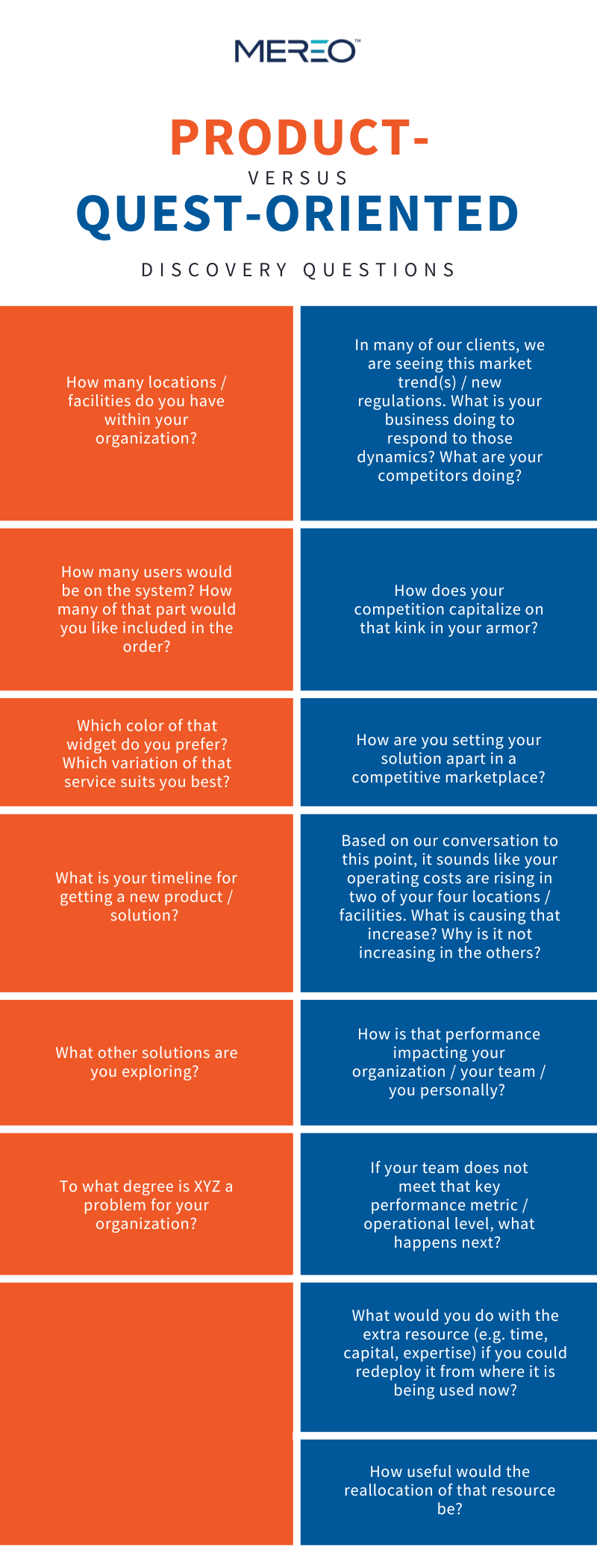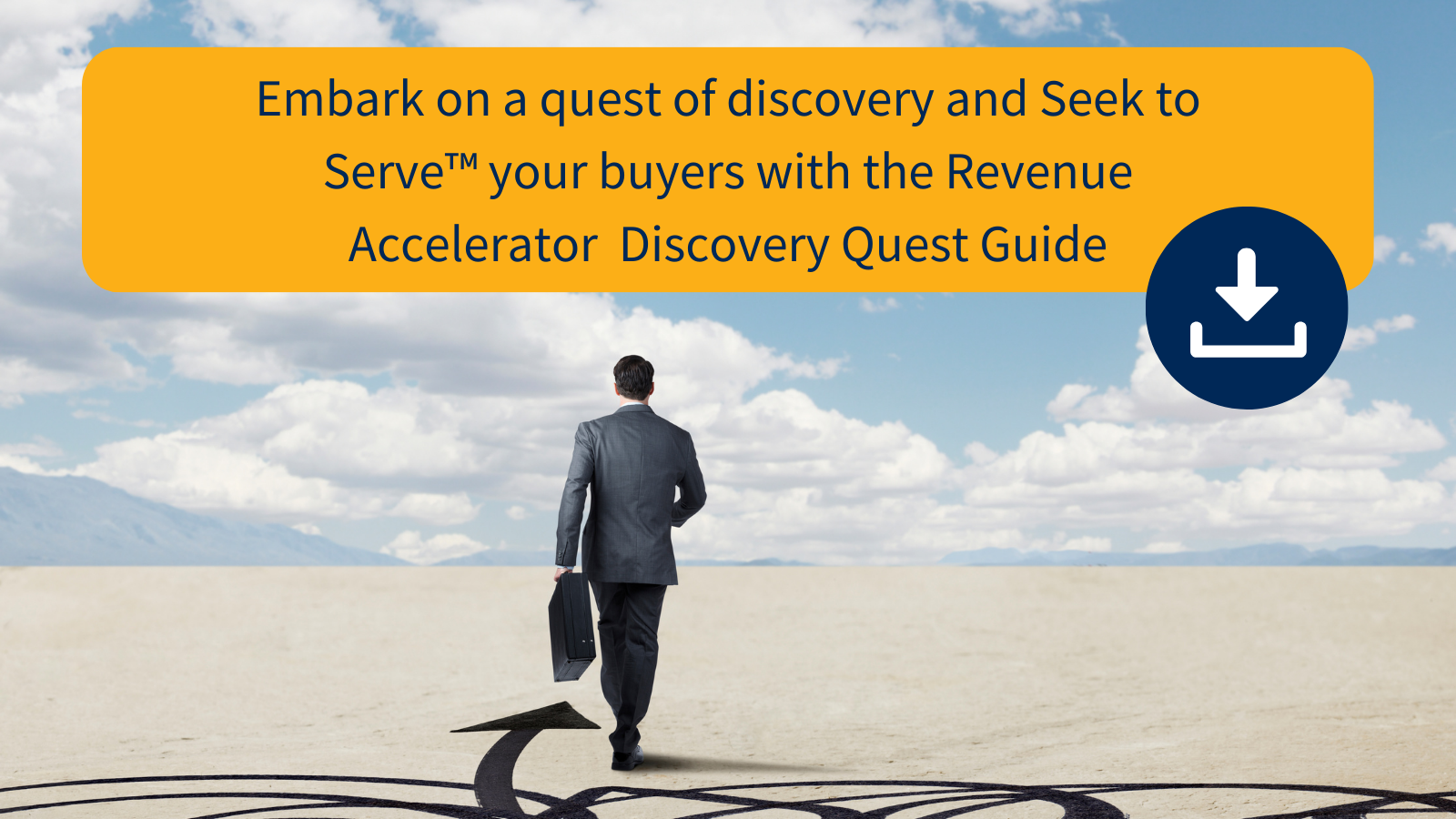If you are like most sellers, you may not realize you could be selling solutions for your competition. What do you offer your buyers that your competitors do not? What are you doing to set yourself apart?
Imagine you are looking for a car. You weigh the qualities you want. Are you interested in safety features most? Does it have the latest technology features? Is the interior comfortable enough for those trips for client meetings?
You have done the research, and now you are ready to buy. You notice that Dealership A and Dealership B have the exact car you want, and they both offer the same features. Dealership A has sold you on the features, but they do not realize they have also sold you on the same features Dealership B is offering and not highlighting anything unique. So how do you choose?
Perhaps Dealership A is offering free car inspection and oil changes in the package. Or maybe their salespeople are more attentive to your needs. That is what sets them apart from Dealership B.
This is a common situation your buyers face every day. When you are not differentiating yourself from the competition, you are selling for those competitors’ solutions just like you are selling your own. Stop selling for your competition with Mereo’s Contrast Quadrant.
WHAT SETS SELLERS APART — AND ABOVE
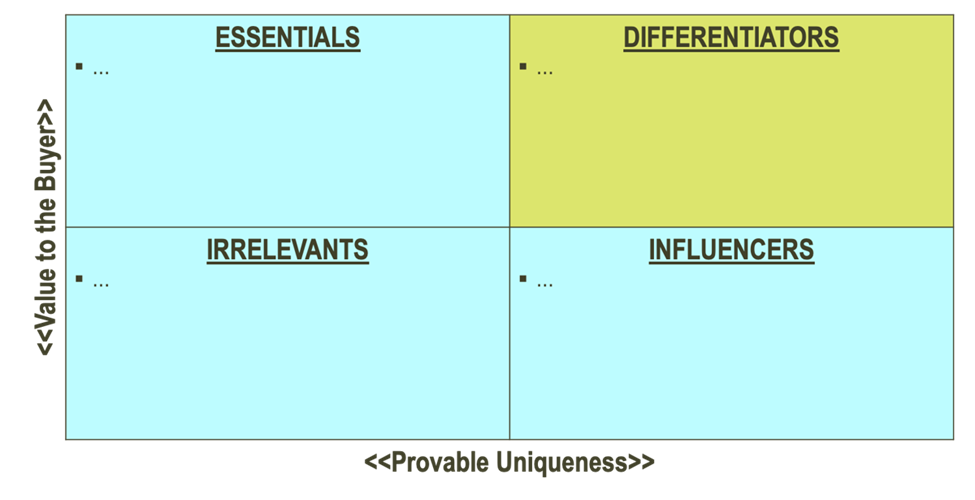
Sellers commonly call their solution features “differentiators.” This is often not accurate, creating confusion for your buyers and reinforcing distrust in the relationship. The truth is: Your solution essentials likely exist in what your competitors are offering as well. So when your salespeople and marketing teams focus on the key features alone, you wind up selling your competitor’s solution at the same time you are selling your own.
Buyers seek out a solution based on its value in solving their challenges. They choose a specific solution from “similar” alternatives, though, due to a specific solution’s key differentiators. This does not mean they disregard the key features of your solution. On the contrary. This means that there must be more than just checking the buyer’s low-hanging boxes in their journey. You need to stand-out from the rest of the crowd.
When meeting with selling experts who struggle with distinguishing their solutions from the competition, Mereo experts turn to the Contrast Quadrant. The Contrast Quadrant above illustrates the aspects you need to employ in order to set your solution apart from the other noise.
When you put the Contrast Quadrant to use, you are maximizing the value you can offer to buyers, while conveying your unique value proposition, and, thus, motivating the buyers to choose your solution.
ESSENTIALS VERSUS DIFFERENTIATORS
For the purpose of this article, we will focus on the “Essentials” and “Differentiators” quadrants, as both are deemed valuable to the buyer. However, your Essentials are not Differentiators, and your Differentiators are not Essentials. Before you can differentiate yourself, you must clearly understand the difference in Essentials and Differentiators.
If something is valuable but not unique, it is an Essential. That is to say, it provides value to the buyers, but that value is not different (or delivered in a unique manner) from the other alternatives buyers are considering. If we do not mention these attributes, the competition will claim them as their Differentiators. These are characteristics or solutions your prospect will view as necessary just to be considered, but they will not be perceived as game-changers in your favor.
If something is valuable and unique, it is a Differentiator. These solution elements offer both value for the buyer and a distinctive capability for realizing that outcome. In buyer-seller conversations and proposals, this is where you will spend the majority of your time. As you communicate these Differentiators, you will need to prove both the uniqueness and the value of that uniqueness.
Now that you understand the difference between the two, which aspect of your solution or organization is / are the most memorable for the buyer? Once you uncover what sets you apart from the competition’s solution, uplift these in your value proposition messaging.
DIFFERENTIATE YOURSELF FROM THE COMPETITION
In order to ensure buyers understand how your solution is different from others, you have to determine the key differentiators. There are four attributes of a differentiator, and your sales leadership must dig deep to identify the most compelling differentiator(s) for your solution and your buyer.
Differentiation Attribute 1: Unique.
If your solution is completely different from that of the competition, you have identified a candidate for differentiation. If your solution itself is not entirely unique, identify that one aspect that is unique. For example, if your solution is similar to another in many aspects, but is the only one that can be configured by a user, then you have a unique feature that is on the way to becoming worthy of differentiation.
Differentiation Attribute 2: Valuable.
Your solution should not be for everyone. The net you are casting would be too wide. Instead, focus on your target buyer and how your solution addresses their needs. If it does not solve the buyer’s pain(s), then it cannot be differentiated as it offers no value to your buyer.
Differentiation Attribute 3: Provable.
Once you have pinpointed your organization’s value proposition, it is time to provide the buyer with proof that value proposition is unique and valuable. One of the most common approaches for proof is done through client value stories or testimonials. Another approach can be providing a demo of the solution while highlighting the differentiated capabilities. However you choose to prove your value, it must be done. Without proof, your buyer will not feel inclined to choose your solution.
Differentiation Attribute 4: Memorable.
If you offer your buyer a list of 20 differentiators as to why they should choose your solution over others they are considering, how many of those 20 will they remember? Maybe two or three. So make the choice simple for your buyer. Even if you have a list of 20 differentiators, summarize it down to the two to three that are most unique, most valuable and most readily proven. Do not make the buyer wade through all the words and options. Keep it simple — that will make those two to three memorable for them, especially if and your broader sales team reinforce them over and over consistently.
SEEK TO SERVE™ TO DIFFERENTIATE EVEN MORE FROM YOUR COMPETITION
Today’s interactions between buyers and sellers can lack the connection, trust and care that marks true relationship-building and value-exchange. Your competitors likely slip up in one or more value selling areas.
With a Seek to Serve, Not to Sell® approach, though, your sellers can stand out from your competitors. They can rise up in the eyes of your buyers as trusted advisors to turn to time and again when the need strikes. Learn how with The Complete Sales Organization Guide to Seek to Serve, Not to Sell.
Get Your Free Copy
